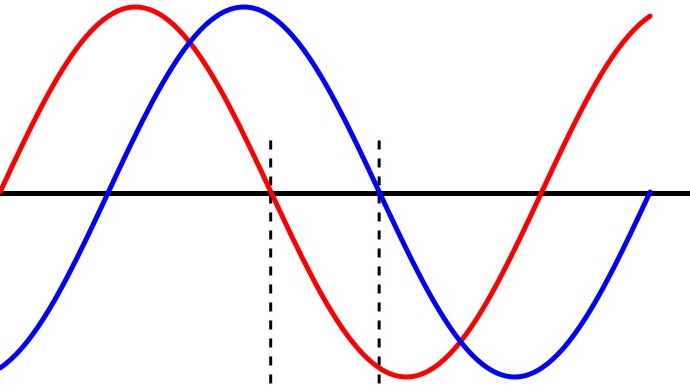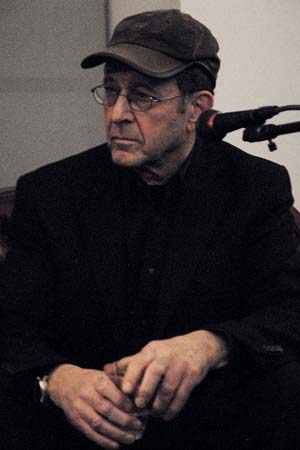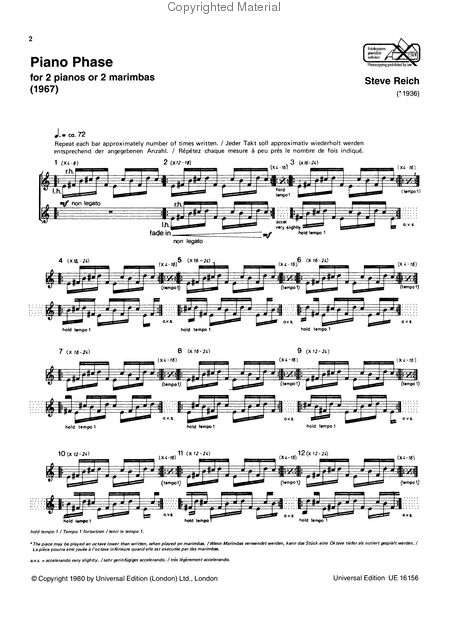Steve Reich: Piano Phase (1967)
The composer's websiteInterview with the Composer


|
History Steve Riech was born in New York in 1936 to June Sillman, a Broadway lyricist, and Leonard Reich, an attorney. Shortly after his birth, his parents divorced, moving to opposite sides of the US, because of this Reich claims to have spent much of his childhood crisscrossing the North American continent on trains, an inspiration for his workDifferent Trains. After studying philosophy and music at Cornell and then as a student of Hall Overton and Vincent Persichetti (at Juilliard) in New York, he pursued advanced studies at Mills College in Oakland, California with composers Darius Milhaud and Luciano Berio. While in California he worked at two strands of music that would have a deep impact on his work: tape music and process music. In his early tape pieces, composed at the California Tape Music Center, he began splitting particular track into multiples of itself, as in his Come Out!, or played the same recording in tight canon, as in It's Gonna Rain. Reich became interested in trying to replicate this extremely tight canon in acoustic instruments, and Piano Phase was his first attempt. He would later explore similar processes in works for solo instrument and tape. Things to Note Like Alvin Lucier's I am Sitting in a Room, Steve Riech's Piano Phase is both an example of process music and derives its rhetoric from the world of tape music. Phase Shifting is the acoustic phenomenon where two similar waves begin at slightly different times. The more they become out-of-sync, the more the two waves interfere with, or eventually cancel out each other - the peaks of the one wave correspond with the troughs of the other wave - this results in brief interruptions in the continuous sound, known as beating. In the early days of tape music, one could replicate this phenomenon by playing the same recording on two tape players beginning at slightly different times. In Piano Phase, Steve Reich explores this process with two pianos playing the same material. The score presents a handful of rotations of a twleve-note figure that is played in twelve variations. In its first presentation the theme begins on the first note; the first variation begins on the second note and ends on the first note; the second variation begins on the third note and ends on the second and so forth until all the rotations of the figure have been played. Alone it would be a simple, quick and relatively dull score. However the process by which the variations proceed is where the interest lies. Reich asks the first piano to begin by playing the theme alone. The second piano joins when the theme is sufficiently established. While one piano keeps the initial tempo, the other speeds up ever so slightly which causes the two to become out-of-sync for a moment before the second pitch of the slowing down piano locks with the first pitch of the steady tempo piano. This process repeats until the two return to unison. It sounds more complicated than it actually is. It is quite difficult to play. |
 Steve Reich (1936 - ) |

|